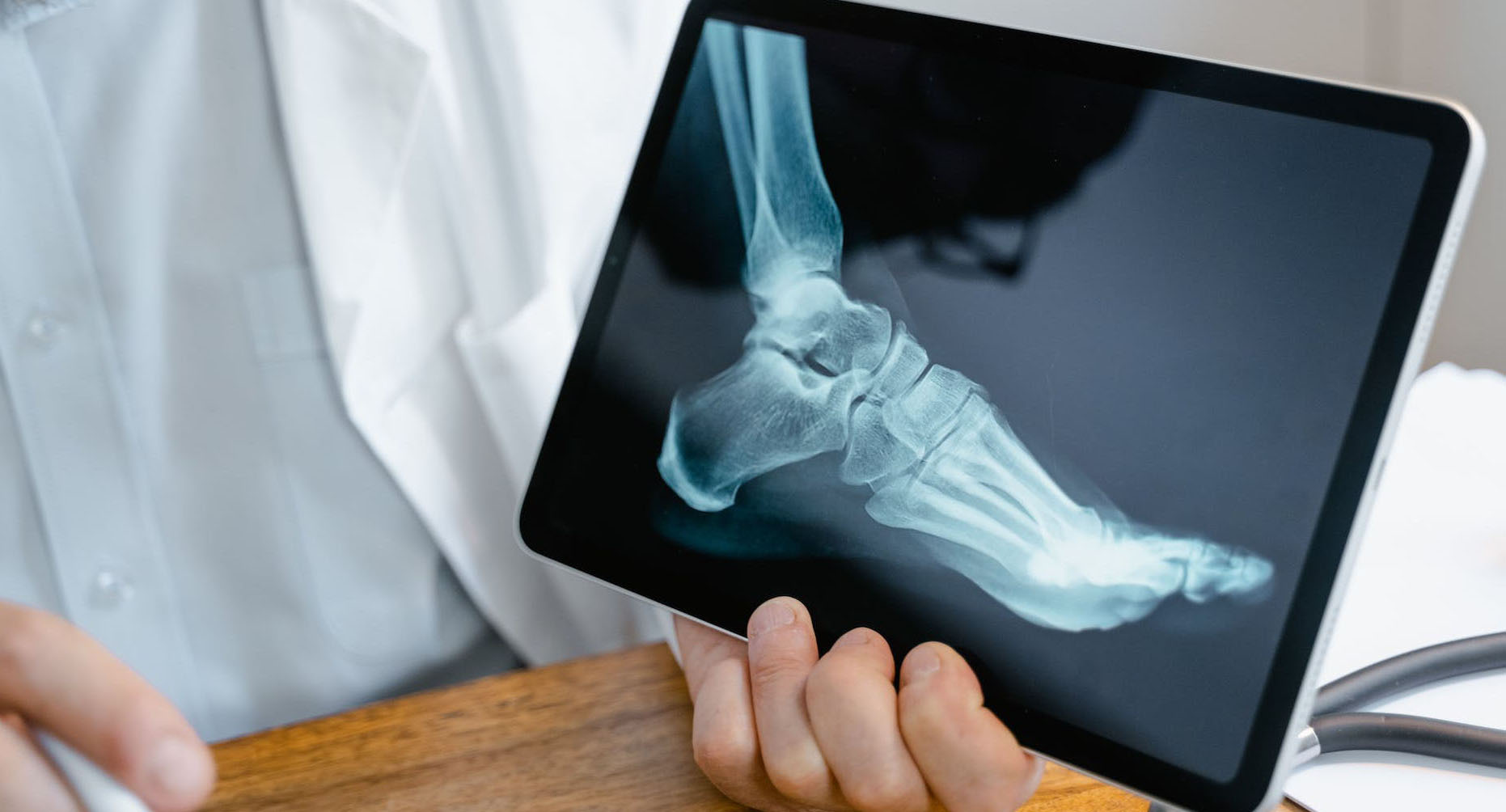New radiation shield use recommendation for patients during X-ray examinations
In 2023, STUK drew up a new recommendation regarding the use of X-ray shields in cooperation with the Society of Radiographers in Finland and physicists from the Radiological Society of Finland. The recommendation was published in January 2024. According to the new recommendation, the patient does not need to wear radiation shields during X-ray examinations. We interviewed Inspector Juha Suutari from STUK on the subject.

How many X-ray examinations and procedures are performed annually in Finland?
According to the latest data from 2021, 5.7 million X-ray examinations and procedures are performed annually. This figure includes standard X-rays and dental X-rays. This means that every Finn undergoes one X-ray per year.
How much radiation exposure does X-ray examinations cause to Finns each year?
On average, X-ray examinations result in an exposure of approximately 0.72 millisievert per year per Finn. X-ray exposure accounts for 12% of the total average exposure per year. In reality, radiation exposure is unevenly distributed among people, as some go to several scans and follow-ups each year, while others don't go at all.
Why did the patient’s radiation shield recommendations change?
There is no single major reason for this. The technology has advanced, the devices produce diagnostic images with an increasingly lower amount of radiation and the radiation doses obtained in examinations have therefore fallen. This development has not happened overnight, but over years and decades.
In 2022, a European consensus on patient contact shielding was published. As a result of this, STUK began to consider whether we should also do a literature review on the subject. Together with the Society of Radiographers in Finland and the physicists of the Radiological Society of Finland, we concluded that it would be necessary to implement the recommendation for the use of radiation shields in Finland. Previously, there was no training focusing solely on the use of protective shields available.
What does the change in radiation shields recommendations require, for example, from healthcare professionals?
We paid attention to the scale of the change when we wrote the recommendation. People all over Finland participated in preparing the recommendations. Based on our supervision, it seems that many places were already following the new procedure before the recommendations were prepared. So, for many, the change meant only that their routine was written in the form of a recommendation. In this case, the change did not require anything.
Of course, there are also operators who do not follow the development of their own industry as actively as others. Then, it is necessary to review and update their own instructions. If you change something in your own instructions, the employees should also be trained accordingly. Patients should also be informed of what has changed.
Why do the new recommendations not apply to the radiation shields of personnel or the patient's carer and comforter?
The recommendations do not apply to the personnel or the patient's carer or comforter as they are in a different position to the patient during the scan situation. The patient is undergoing an imaging because, for example, an attempt is made to diagnose a disease and the patient benefits from the imaging. When it comes to the use of protective shields, it is important to point out the benefits of using them compared to the risks associated with using them. For example, if the shield moves in the middle of a scan and the scan cannot therefore be used, the entire scan or part of it may need to be repeated. The patient may then receive up to double the dose of radiation.
The shields often provide no significant benefit for the patient. In the case of employees, however, protective shields generally do not prevent work or participating in the examination, so the risk of the examination failing due to the employee’s protective shield is practically zero. In addition, the employee does not benefit from the exposure, and exposure can be largely prevented by using the shield.
Do the recommendations only apply to human patients? Is there anything else to consider, for example, while X-raying animals, as you often have to hold on to the animal?
This is an interesting theme, as animals are also often referred to as patients, even though from the perspective of the Radiation Act, animals are not patients. Currently, animals do not need to wear protective shields. When imaging animals, we are interested in the radiation safety of the holder. The same recommendations apply for the holder as for the employee and the carer or comforter. This means that the imaging can succeed even if the holder is wearing a shield.
Is it safe to undergo X-ray examinations?
It is safe to undergo X-ray examinations. Examinations have become safer over the years as doses are lower and new methods for diagnosing diseases have been developed. Safety comes from having skilled employees carrying out the examination who know how to use the devices as efficiently as possible, how to correctly define the imaging area, how to select the correct imaging directions and how to prepare the patient well so that the examination can be completed in one go. On the other hand, unnecessary and poorly performed examinations cannot be made safe by using radiation shields. If the recommendations are changed, it is important to instruct the employees so that they can also inform the patients.
Do the Society of Radiographers in Finland and the physicists of the Radiological Society of Finland have any other cooperation with STUK?
These kinds of guides are the closest possible form of collaboration. They require clinical expertise to include a perspective beyond that of the regulatory authority. Although some inspectors are also experienced in hospital work, their knowledge it is not so up-to-date that it would be worthwhile to draw up guides solely on this basis. Today’s remote working practices have made it easier for us to collaborate with different organizations, as we can work efficiently from all over Finland.